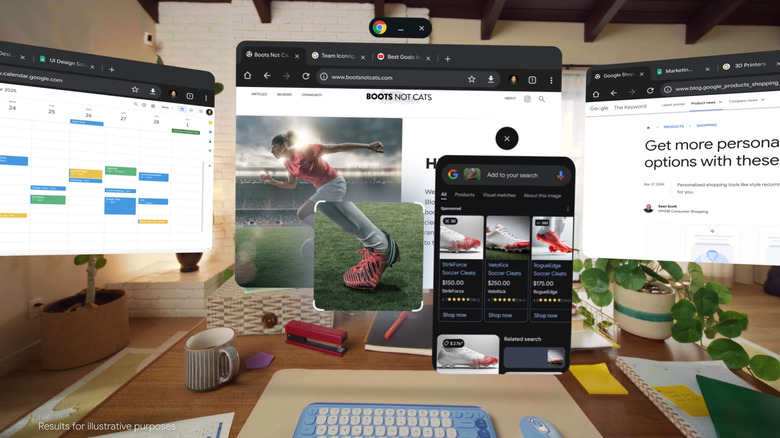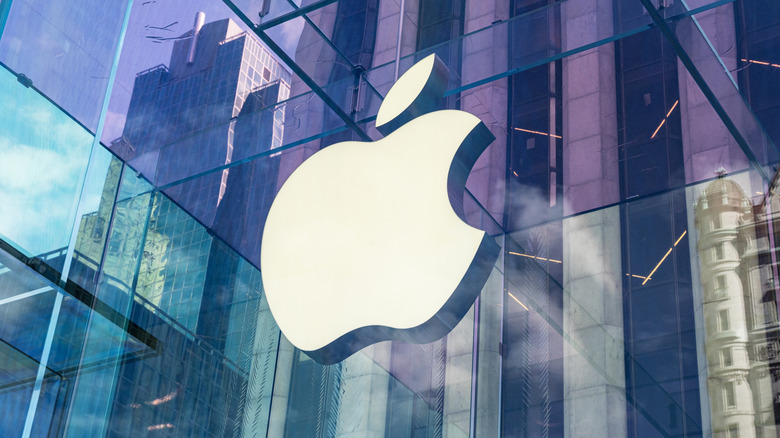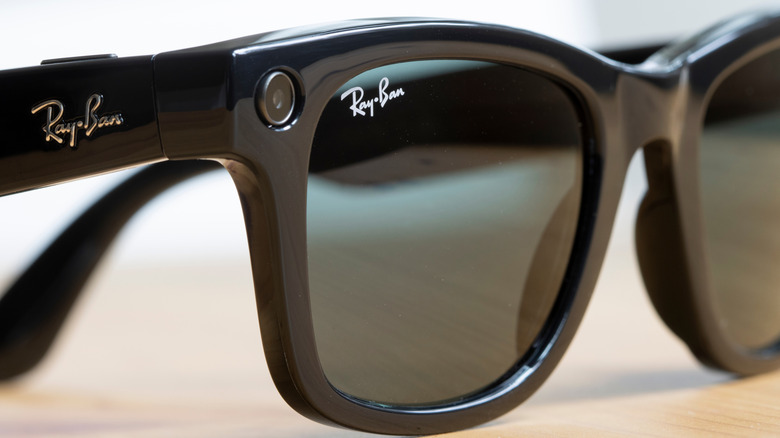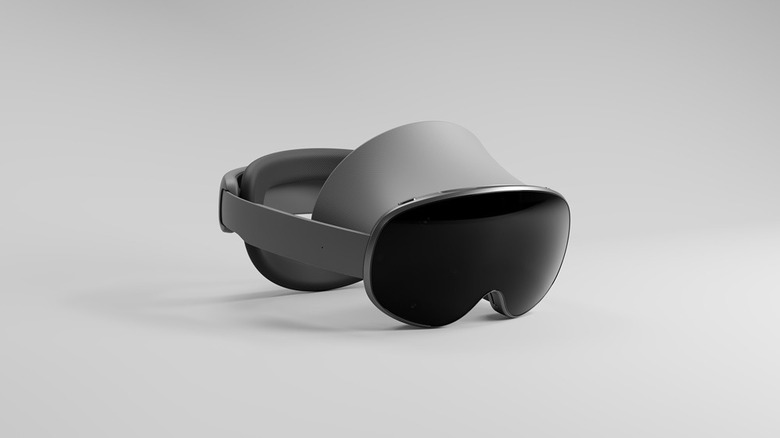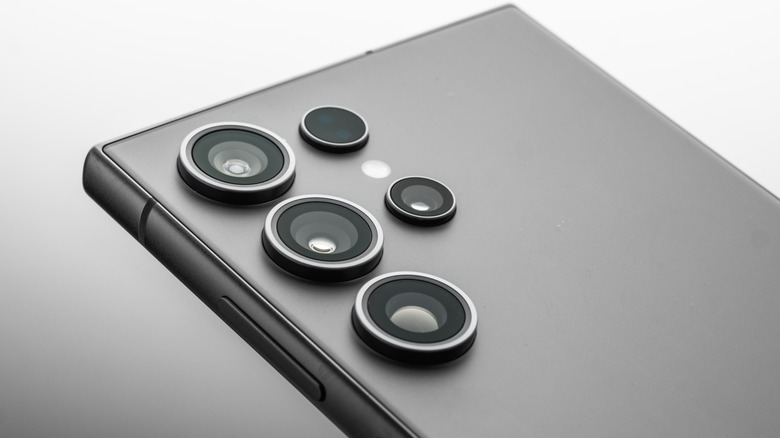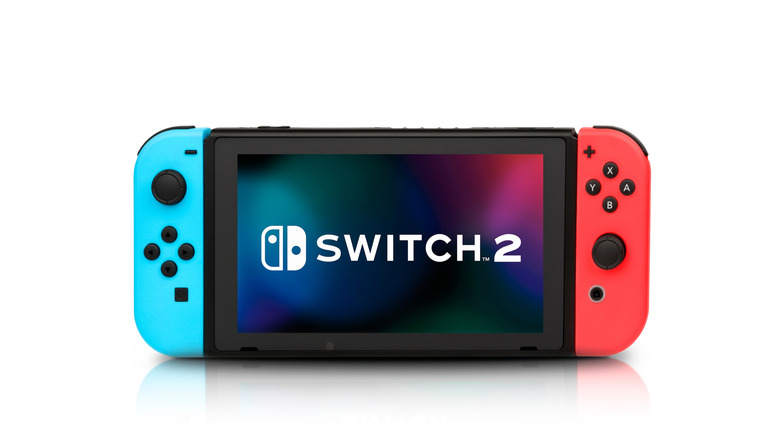6 Of The Most Exciting New Tech Products Coming Out In 2025
With 2025 finally here, it's time to look ahead to an exciting year for tech. Last year was a bit of an off-season for new hardware as AI software took center stage. We saw the release of plenty of gadgets, but not all of them held up to scrutiny, particularly the ill-fated AI devices. However, as the end of the year approached, we kept our ear to the ground for details regarding what's likely to arrive in the months to come. It turns out that 2025 is shaping up to be an exciting year for new tech products, starting with the Consumer Electronics Show in early January and continuing all the way through the year.
From new advancements in augmented, virtual, and mixed reality to incredible leaps forward in computer graphics, 2025 is the year to finally build that gaming computer you've always wanted, or to finally get yourself a VR headset. We're also likely to see brand-new devices from Apple and Samsung in novel product categories, with the former shipping smart home gadgets and the latter entering a collaboration with Google to stop the momentum of the Meta Quest 3.
This is quickly shaping up to be a year that will finally shake off the cloud of uncertainty that's been hanging over the industry for the past several years. We may live in uncertain times, but one thing is virtually guaranteed: these seven pieces of hardware are going to be among the most exciting new tech products coming out in 2025.
Nvidia GeForce RTX 5000 series GPUs
There is perhaps no more highly anticipated tech in 2025 than the next generation of Nvidia's consumer graphics cards. Over the past several years, the company's RTX line of GPUs have transcended their function as computer components, becoming something more like a status symbol. They're the Coke to AMD's Pepsi (which makes Intel RC Cola). It's been over two years since the launch of the RTX 4000 series back in 2022, and those cards are still enabling some of the best graphical experiences around.
The Nvidia GeForce RTX 5000 series is expected to launch sometime during the first quarter of this year. One likely venue for their debut could be the Consumer Electronics Show in Las Vegas, which takes place from January 7-11. While we don't have concrete details about the cards, a few things can be expected of them. Notably, AI will be more of a focus than ever before, since these are the first RTX cards to launch during the current wave of AI hype. We can expect more Tensor Cores and CUDA cores to power AI inference and parallel computation.
Other specs have reportedly leaked from partner manufacturers, leading us to believe the RTX 5090 will supplant the still-excellent RTX 4090 as the GPU to beat for the foreseeable future. We're talking 32 GB of GDDR7 VRAM and 600W of power, among other specs. But competition is heating up. Intel recently threw down the gauntlet with new Arc Battlemage cards that proved you shouldn't count team blue out just yet. AMD continues to perfect its excellent Radeon GPUs. Even so, Nvidia seems poised to beat them out on everything but price. Economic trends foreshadow the RTX 5000 series being Nvidia's most expensive GPUs yet. It ain't cheap being green.
Apple's new smart home tablet
We reported on this one back in November 2024, as it appears Apple's next new device could flip the tablet script with a wall-mounted smart home control panel running on a brand-new OS. This is the sort of thing we'd dismiss as the daydreaming of fanboys were the source not so reputable. Bloomberg broke the story, reporting that the device, codenamed J490, is headed to market as early as March 2025.
This new product category will be somewhere in between a cheap, wall-mounted smart home control panel such as the Control4 listed in our roundup of the best home automation systems and the Google Pixel Tablet, which comes with a dock that transforms it into an ambient smart home controller. It will reportedly be shaped like a square roughly the size of two iPhones placed alongside one another. One of the most fascinating details in the Bloomberg report is that a rumored $1,000 version of the device will come with a robotic limb that moves it around for video conferencing (currently, iPads can track subjects during a video call, but this uses a cropped static camera).
Moreover, we might see other smart home devices launched alongside this new control panel. This could be the year Apple makes a real play for the smart home space, which is projected to grow rapidly year-over-year until at least 2032. With the iPhone being America's dominant smartphone, the Cupertino giant has a solid shot at taking the legs out from underneath Amazon, which currently dominates that space. Apple has shown interest in smart home tech through products like the HomePod smart speaker and Apple Home (aka HomeKit), but has never gained a foothold.
Meta's new Google Glass-style Ray Bans
Meta may eventually own the future of augmented reality with its almost magical Orion glasses, but those aren't ready for public consumption yet. In the meantime, one of the most surprising recent successes in consumer tech has been Meta's collaboration with Italian eyewear titan Luxottica Group. The two companies have deepened their relationship after the success of the Meta Ray Bans — regular Ray Ban glasses with cameras and an AI voice assistant embedded in the frames. Recent reporting from The Financial Times suggests that the next version of the shades will finally add a heads-up display to the mix. In other words, Meta is doing what Google failed to do with Google Glass over a decade ago.
Upcoming Meta Ray Bans will reportedly have a small heads-up display to convey basic information such as notifications. Think about the kind of information that a smartwatch would deliver, and you've got the basic idea, since we don't yet have more details. Google Glass was essentially the same thing, but with a dorkier form factor.
In an interview with The Verge's Alex Heath, Mark Zuckerberg recently commented on his company's partnership with Luxottica, saying, "They are going to go from being the premier glasses company in the world to, I think, one of the major technology companies in the world." The Meta CEO believes glasses will replace our phones, and Meta is clearly working towards that goal from both sides of the coin. On one hand, its Quest headsets dominate the full-fat VR market, while on the other, it is using its newfound success in the smart glasses space to try to bridge the gap. When Orion finally makes it to store shelves, it will be a marriage of headset capability with a glasses form factor.
Samsung's VR headset and other Android XR devices
Late last year, Google announced Android XR for headsets and glasses. Essentially, users will be able to run apps from the Play Store as windows in three-dimensional space, though of course apps specifically developed for XR experiences will be coming to the platform as well. Additionally, Google is packing this new Android fork with Gemini AI capabilities. Altogether, this basically puts any Android XR device on an immediate playing field with Meta Quest devices or the Apple Vision Pro, since they'll have a huge stable of apps at launch.
The first device to launch with Android XR will be a Samsung headset codenamed Project Moohan, which means "infinity" in Korean. It looks a bit like a pair of ski goggles with a light-blocking visor behind them, and will be powered by the Qualcomm Snapdragon XR2+ Gen 2 chipset. It uses multimodal AI — AI that works with multiple contexts — to keep track of what you're doing across multiple apps and physical environments. Members of the press granted an early look at the device came away impressed by the AI, which can organize windows and more. Google is currently testing glasses as well, though those are further away and may not ship this year.
Android XR could be a big deal, or it could end up being a repeat of Daydream, Google's ill-fated attempt at smartphone VR. This time, though, Google is partnering with other companies, which seems like a lot more commitment to doing things right this time around. But others have a head start in the market. Some readers will know that Android is already the most popular VR platform, since it's the underlying platform behind Meta Horizon OS, the software running on Quest headsets.
Samsung Galaxy S25 Slim and iPhone Air
Thin tech is back, baby! There was a time when slim tech was all the rage, a charge led primarily by Apple, which was shipping iPod Nanos, MacBook Airs, and more from the mid-2000s to mid-2010s. But then came the infamous iPhone 6 bendgate, where people realized that the phone was too thin to have much structural integrity. It could snap in half without much effort, and internal documents later showed Apple knew this was likely to happen. In retrospect, bendgate can easily be viewed as the moment when thin tech went out of fashion and function got prioritized over form.
Now, slim devices are coming back with a vengeance. First, we saw Apple release its thinnest iPad ever in last year's M4 iPad Pro. Then, Huawei blew our minds with its triple-folding phone, the Mate XT Ultimate, which measures a wafer-thin 3.6 millimeters unfolded. This year, Samsung is expected to ship a Galaxy S25 Slim alongside other S25 phones, and Apple may join the fray with a thin version of the iPhone thought to be called the iPhone Air.
The latest leaks suggest that the iPhone Air will be slightly thicker than the M4 iPad Pro at 6.25 millimeters, while the Galaxy S25 Slim will clock in at an ever so slightly thicker 6.5 millimeters. The S25 Slim should make its debut at the Galaxy Unpacked event later this month, while the iPhone Air will probably not make an appearance until the iPhone 17 launches in September. With small phones largely absent from the market, there's a hope that slim phones will be a good alternative for those who don't want a phone that doubles as a paperweight. Either way, they're sure to look dazzling.
Nintendo Switch 2
The Nintendo Switch is the second most successful gaming console of all time, beaten out in sales only by the PlayStation 2 that was released in 2000. The original Switch was released in 2017, and has been beloved by fans despite its lackluster internals compared to other consoles from its generation, thanks to its strong library of games titles and its emphasis on portability. Even as the PlayStation and Xbox leapt into their current generations, the Switch has continued to put numbers on the board thanks to exclusive, critically acclaimed titles like "The Legend of Zelda: Tears of the Kingdom." An OLED version of the device was released in 2021, but it's high time for a true successor.
This year, the Nintendo Switch 2 is expected to launch in March. It will be backward-compatible with original Switch games, meaning you don't need to hang onto your current Switch to keep enjoying your games. Leaks (which should be taken with a grain of salt) show that the Switch 2 will have USB-C, magnetically attaching Joy-Con controllers, and a larger screen. Alleged specifications will include 12 GB of RAM — up from 4 GB on the original Switch — and 256 GB of storage, an upgrade from the paltry 32 GB on the original.
Expect the Switch 2 to be one of the hottest items of the year, and one of the most annoying to try getting your hands on, as scalpers hoard them to drive up the price and make a profit. Nintendo plans on creating a massive supply of Switch 2s in an effort to combat scalpers, so hopefully the market is flooded enough to discourage such behavior.
